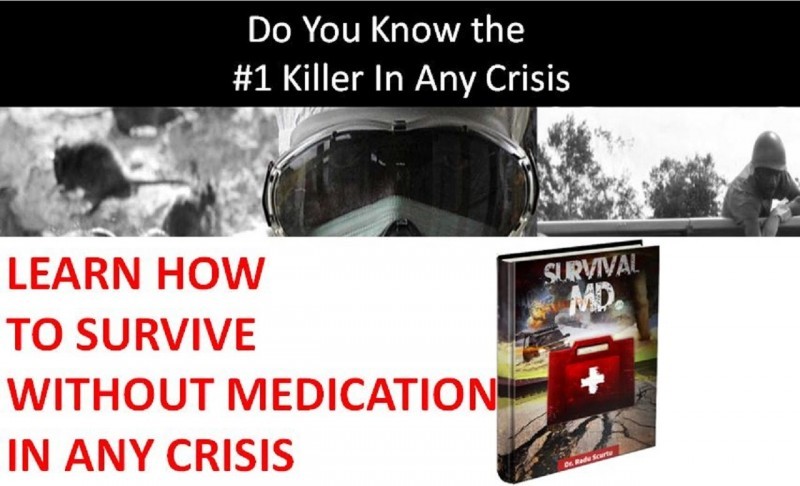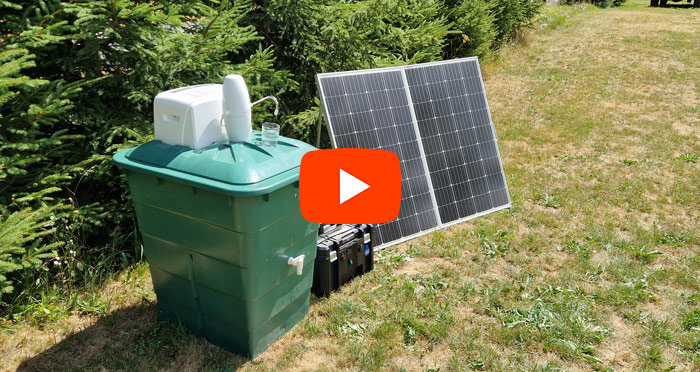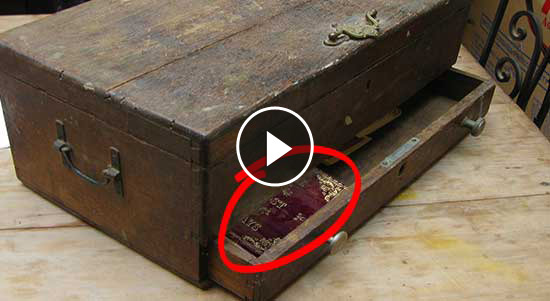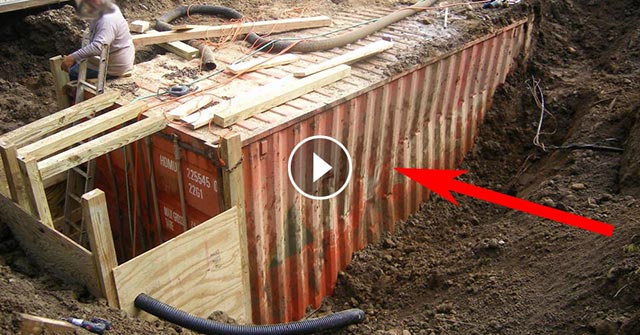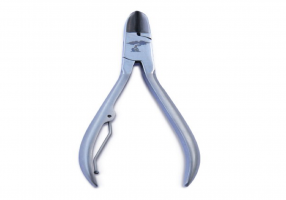Click Here To Join Our Telegram Channel for FREE daily tutorials!
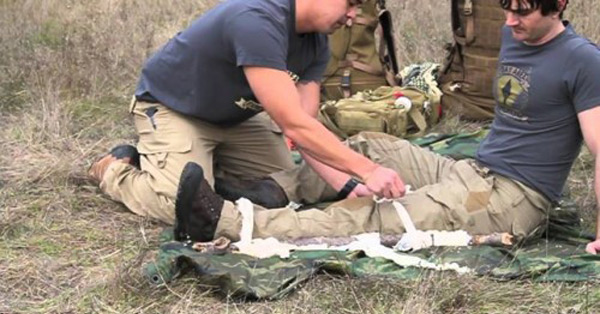
Broken bones, fractures, and joint injuries are a common thing that happens on a daily basis. We’re only one phone call away from receiving immediate medical assistance if in need. It’s not a life-threatening situation in the 21st century unless there are immediate complications. But what if we happen to break a hand or a leg in a TEOTWAWKI scenario, where medical assistance will cease to be a commodity and when our very survival will depend on our mobility and full functionality? In case this happens, all is not lost, there are procedures to follow that will get us out of harm’s way. But if the treatment is to be successful, you’ll need to do everything by the book. The first thing to do is to make sure that the injured person’s life is not threatened in any way; once he’s out of harm’s way you can start treating the injury. Once his vital signs have been checked and you’ve concluded that he has been completely stabilized, you can start treating the fracture.
First and foremost, you’ll need to make sure that what you’re dealing with is a fracture and not something else. Most commonly fractures bear the following signs and symptoms: the inability to use or bear weight on the affected body part, severe pain, swelling, deformity, discoloration etc. In some cases, the ones that suffer the injury might even hear a loud cracking noise. In extreme cases, the fracture is so bad that the bone will pierce the flesh. Apart from bone fractures, there are other injuries that are easier to treat and not as severe but can be just as debilitating if left untreated, like muscle strained ligaments and joint dislocations. Fractures can be very tricky and should be approached with care. Many complications can arise (damaged blood vessels, torn muscles, damaged nerves), so minimal and gentle manipulation is imperative. If the affected area becomes swollen, pale, numb and the patient succumbs to shock, it’s probably that an important blood vessel has been damaged, causing internal bleeding. In this case, you should put on hold the fracture treatment and stop the hemorrhaging instead. The best method of dealing with broken bones is splinting. Many people would advise that the splint should be applied without traction, in the position found, but this would be completely impractical, as the bone should be placed in an anatomically correct position in order to prevent severe pain and loss of function (partial or even complete). So it’s ok to manipulate the fracture gently.
Broken legs

You’ll need two forked branches that are strong enough, so you’ll need them to be at least 2 inches in diameter. One should measure the exact distance from the armpit to 12 inches past his broken leg, while the other should measure the distance from the groin to 12 inches past the broken leg. Next, you’ll need to pad the splints. The ends that go past the leg (that measure 12 inches past the leg) will get a 2 inch in diameter branch placed in between them. Now the two splints should be tied together accordingly with the splinting guidelines with anything you can get your hands on cloth, vines, rope etc. With the same material (provided it’s strong enough), tie a wrap around the ankle; the free ends will get tied to the cross member. Finally, add a twisting stick at the free end of the ankle wrap; twisting the wrap will provide traction. Continue twisting until the broken leg is in line with the healthy leg.
Broken feet
 Splinting a foot will require a piece of long and tough cardboard or plastic. This piece of material should be bent lengthwise so that you get three identical (more or less) segments. You can add cloth or padding on the inner side to add comfort. Place the splint under the foot and the leg, so that it reaches halfway to the knee, yet it goes enough under the foot to immobilize the ankle; once this is done, add some cloth between the ankle and splint. Fold the cardboard around the leg and secure it with some tape. Now do the same as you did with the ankle for all the empty spaces between the leg and the splint: add cloth. You can reduce swelling and discomfort with ice, but don’t keep it on for longer than 20 minutes.
Splinting a foot will require a piece of long and tough cardboard or plastic. This piece of material should be bent lengthwise so that you get three identical (more or less) segments. You can add cloth or padding on the inner side to add comfort. Place the splint under the foot and the leg, so that it reaches halfway to the knee, yet it goes enough under the foot to immobilize the ankle; once this is done, add some cloth between the ankle and splint. Fold the cardboard around the leg and secure it with some tape. Now do the same as you did with the ankle for all the empty spaces between the leg and the splint: add cloth. You can reduce swelling and discomfort with ice, but don’t keep it on for longer than 20 minutes.
Broken arms
Once the arm is adjusted in its natural position, you should apply the splints. You can use any material as long as it’s hard enough (strong cardboard, sticks, wood etc.) and long enough, so they extend past the wrist and the elbow. Before the splints go on, wrap the arm in a clean and soft cloth, for comfort more than anything. Once the arm is wrapped, you can wrap the splints as well. The splints should be applied equally when it comes to length; for forearm fractures, the splints should go beyond the wrist, while in the case of upper arm fractures, they should extend beyond the elbow. The cloth that holds the splints together should be at least 5 inches before and after the fracture. Don’t tie the bonds too firmly; if you can slip two fingers in, it’s perfect. In order to keep the arm secure and in place, tie a piece of cloth around the neck of the patient and slip the fractured hand in it. The hand should be centered on the sling and it should be at a flat and horizontal position. If the elbow is at a 90-degree angle, you’ve done an excellent job.

Broken hands
Securing a broken hand in place will be a bit trickier, as you’ll need a material that is strong and rigid enough to hold the hand in place, yet flexible enough to fold. It should extend from the wrist to the end of the fingers. The hand should be straight and relaxed, with its fingers slightly opened. Place some cloth in the palm of the hand and place the first splint under the wrist, so it extends to the end of the fingers. The splint should be folded up and around the wrist. Tie it together and add tape for extra security. Once you’re done, stuff the open spaces with a cloth to increase comfort and firmness.
If you ever find yourself in the posture of treating broken bones or fractures, remember the first thing to do is to keep calm and act with caution. You’ll need to be very aware and have enough knowledge in the matter. You can educate yourself further in the anatomy of the limbs and learn a few knots that will secure your splints in place. You can practice these techniques and even take up courses for first aid, so you won’t have to do it for the first time in a SHTF situation.
This Crazy Off Grid Device Literally Makes Drinkable Water From Fresh Air:
According to NASA, the U.S. is expecting a 100-YEAR LONG MEGADROUGHT.
It's already begun. Ask the farmers in California. They know.
Every survivalist knows that water is of critical importance. You NEED an independent water source that you can count on!
As an interesting "survival rehearsal" - imagine that you turned the tap on right now and nothing came out. How long would you last?
But what if there was another water source literally hidden in plain sight. That's right, I'm talking about the atmosphere!
The amazing thing about getting water from the natural moisture in the air... is that it is ALWAYS available.
This gives you real water security!
Learn more about how to tap into "Nature's secret water reservoir" and stay hydrated when TSHTF!
Watch the video:
😳 What Tinnitus Does To Your Brain Cells (And How To Stop It)
After 47 years of studies and countless brain scans done on more than 2,400 tinnitus patients, scientists at the MIT Institute found that in a shocking 96% of cases, tinnitus was actually shrinking their brain cells.
As it turns out, tinnitus and brain health are strongly linked.
Even more interesting: The reason why top army officials are not deaf after decades of hearing machine guns, bombs going off and helicopter noises…
Is because they are using something called "the wire method", a simple protocol inspired by a classified surgery on deaf people from the 1950s...

I Can't Help Showing This Off:
If you haven't heard of Claude Davis yet do yourself a huge favor and watch this video.
One of the smartest guys I ever had the pleasure of meeting, Claude set-up a unique prepping system that changed his life forever.
I already tried it myself and let me tell... you I was completely blown away... His surprising tactics could make your life easier and give you the peace of mind you deserve.
Don't just take my word for it... watch his short video and decide for yourself.

Most People Don't Have The Guts To Try This:
An amazing discovery in an abandoned house in Austin, Texas: A lost book of amazing survival knowledge, believed to have been long vanished to history, has been found in a dusty drawer in the house which belonged to a guy named Claude Davis.
Remember... back in those days, there was no electricity... no refrigerators... no law enforcement... and certainly no grocery store or supermarkets... Some of these exceptional skills are hundreds of years of old and they were learned the hard way by the early pioneers.
>> Click here to find out about them now
We've lost to history so much survival knowledge that we've become clueless compared to what our great grandfathers did or built on a daily basis to sustain their families.
Neighbors said that for the last couple of years Claude has tried to unearth and learn the forgotten ways of our great-grandparents and claimed to have found a secret of gargantuan proportions. A secret that he is about to reveal together with 3 old teachings that will change everything you think you know about preparedness:
>>> Click Here To Watch His Short Video <<<

More Off-Grid And Survival Resources:

What REALLY Happens When You Bury a Shipping Container? (Hint: It's A Bit Crazy...)
Shipping containers are all the rage - but if you are thinking about buying one, you MUST watch this video first:
There's a general belief that if you bury a shipping container you can create an awesome root cellar / storm shelter / survival bunker.
But is a shipping container strong enough to handle the pressure?
Watch the video to see what happens:
What Really Happens When You Bury a Shipping Container? (Click To Watch Video)

